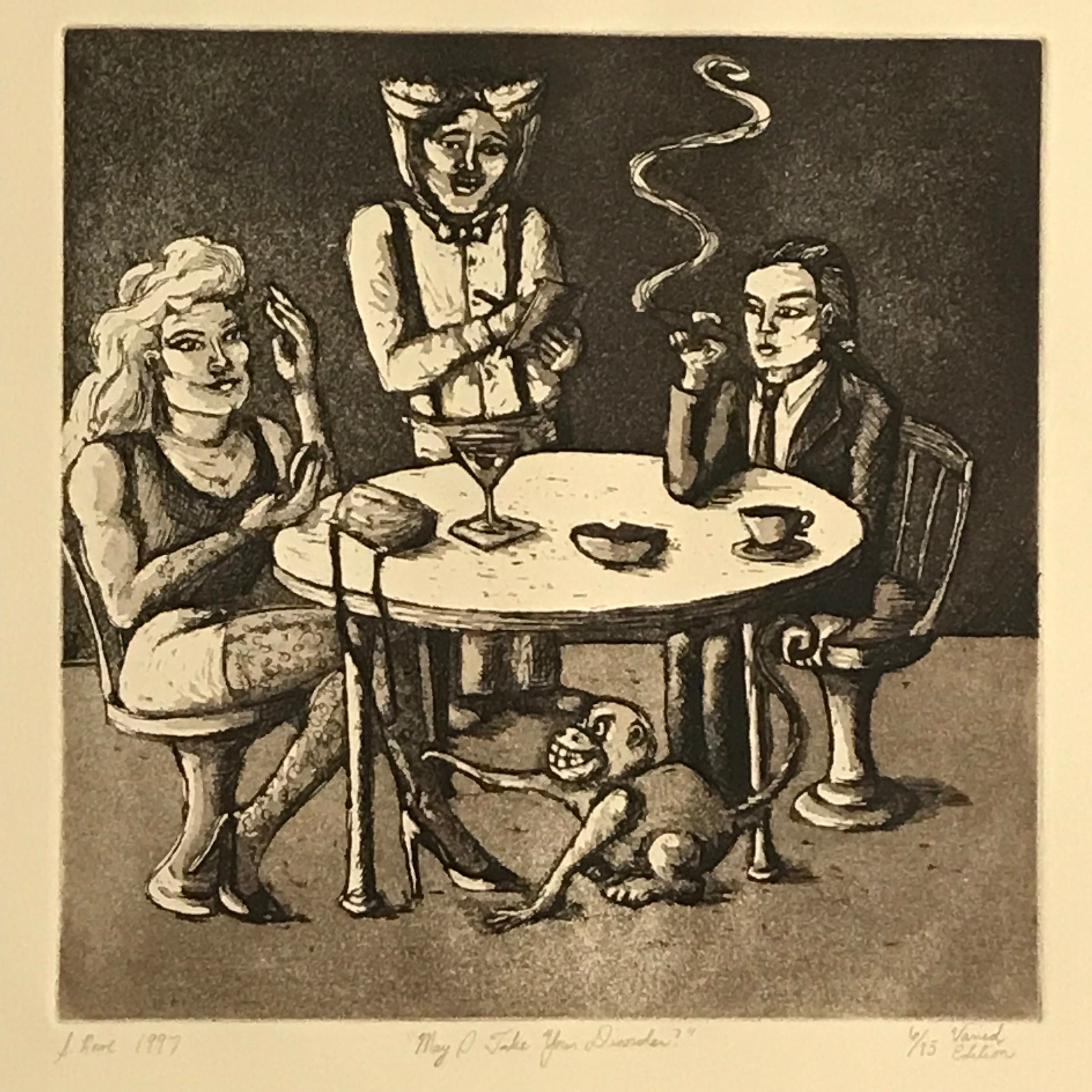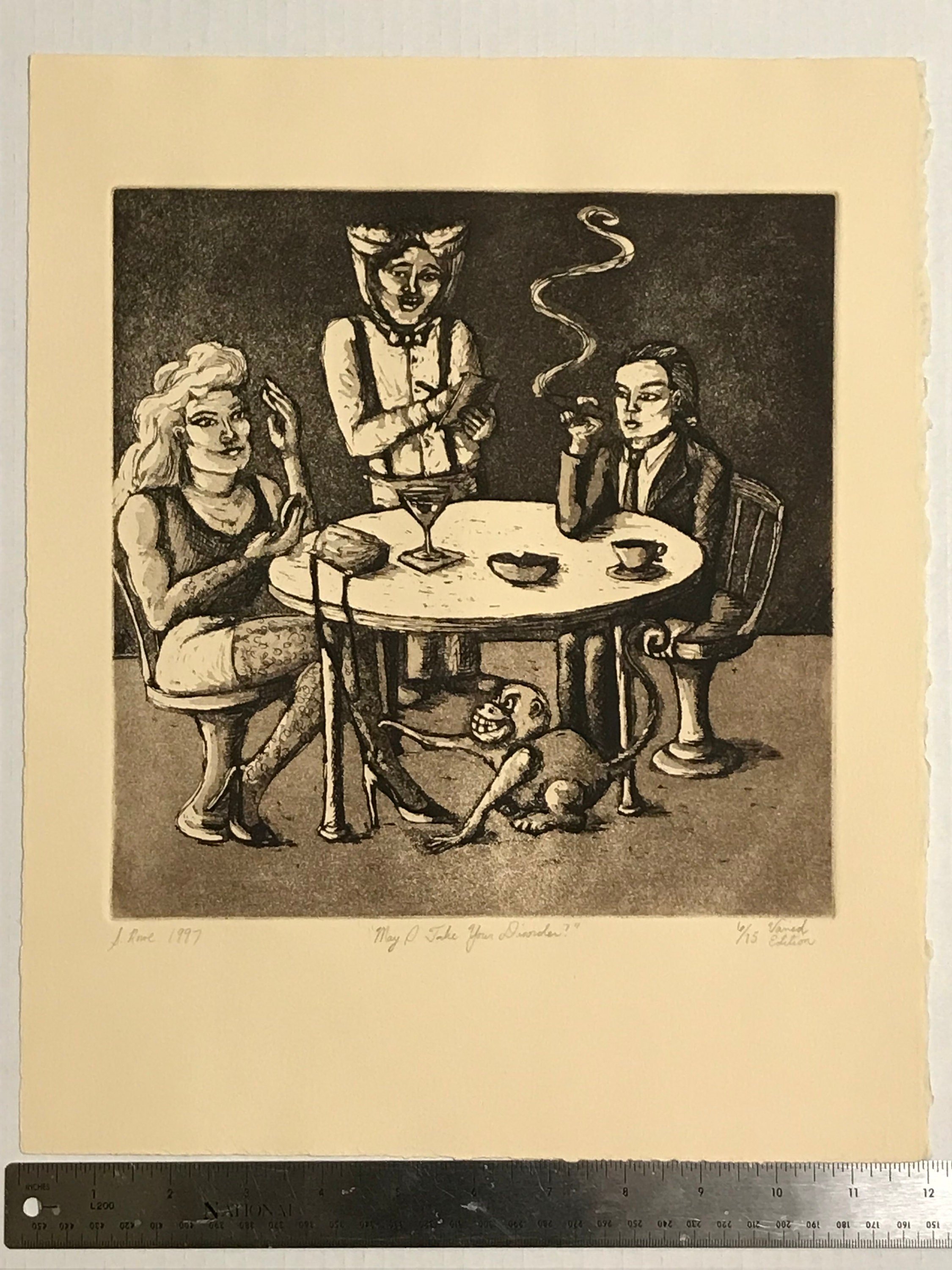 Image 1 of 4
Image 1 of 4

 Image 2 of 4
Image 2 of 4

 Image 3 of 4
Image 3 of 4

 Image 4 of 4
Image 4 of 4





Surrealist Café Scene (Sepia) - aquatint etching – original, signed, and numbered (6/75)
"May I Take Your Disorder" | Aquatint etching | 1997
In both my undergraduate and graduate work in Art Therapy, I learned that the DSM (Diagnostic and Statistical Manual of Mental Disorders) removed the diagnosis of homosexuality as a disorder in 1973. However, gender dysphoria (formerly called gender identity disorder) is still used today to describe folks in the trans community. At the time, I couldn't get my head around any of this because I had gay and gender-fluid friends who were perfectly normal. "May I Take Your Disorder?" explores the mental health stigmas experienced by the LGBTQ+ community and posits the idea that those who are doing the judging probably have some unchecked issues of their own.
Aquatint is an intaglio printmaking technique where the image is incised into a surface. The incised area holds the ink and is transferred to the paper. The aquatint process creates tones in addition to etched lines. Created in 1997, this signed and numbered aquatint (6/75 - varied edition) is in sepia ink and printed on cream/beige watercolor paper. Paper measures 12" W x 14.75" H; printed area measures 9.75" W x 9.75" H. Unframed.
Limited edition - plate no longer exists.
"May I Take Your Disorder" | Aquatint etching | 1997
In both my undergraduate and graduate work in Art Therapy, I learned that the DSM (Diagnostic and Statistical Manual of Mental Disorders) removed the diagnosis of homosexuality as a disorder in 1973. However, gender dysphoria (formerly called gender identity disorder) is still used today to describe folks in the trans community. At the time, I couldn't get my head around any of this because I had gay and gender-fluid friends who were perfectly normal. "May I Take Your Disorder?" explores the mental health stigmas experienced by the LGBTQ+ community and posits the idea that those who are doing the judging probably have some unchecked issues of their own.
Aquatint is an intaglio printmaking technique where the image is incised into a surface. The incised area holds the ink and is transferred to the paper. The aquatint process creates tones in addition to etched lines. Created in 1997, this signed and numbered aquatint (6/75 - varied edition) is in sepia ink and printed on cream/beige watercolor paper. Paper measures 12" W x 14.75" H; printed area measures 9.75" W x 9.75" H. Unframed.
Limited edition - plate no longer exists.



















